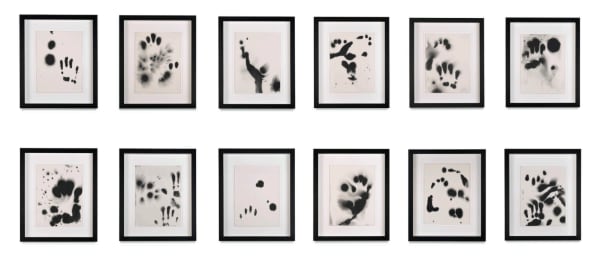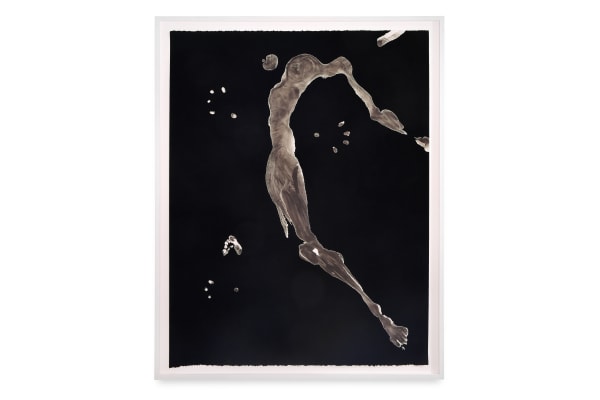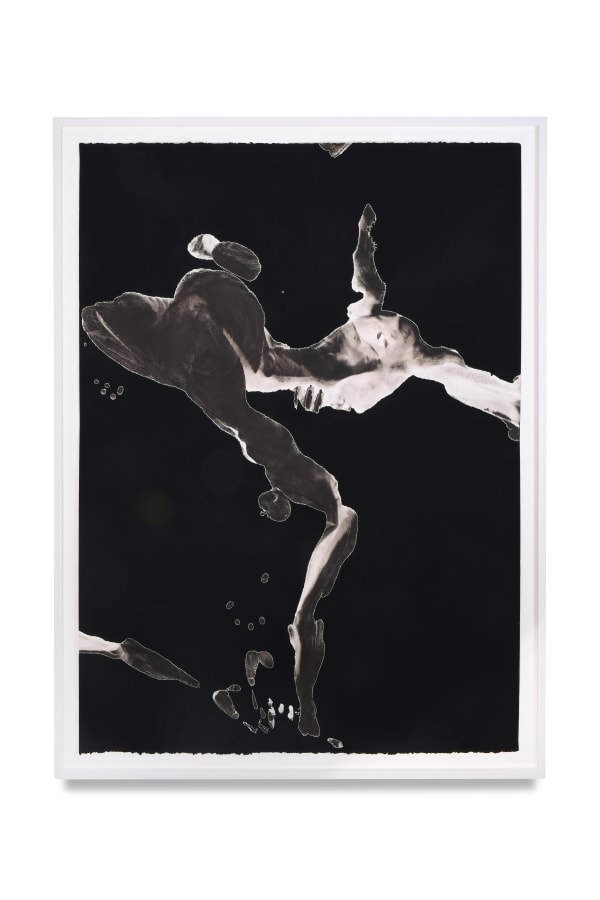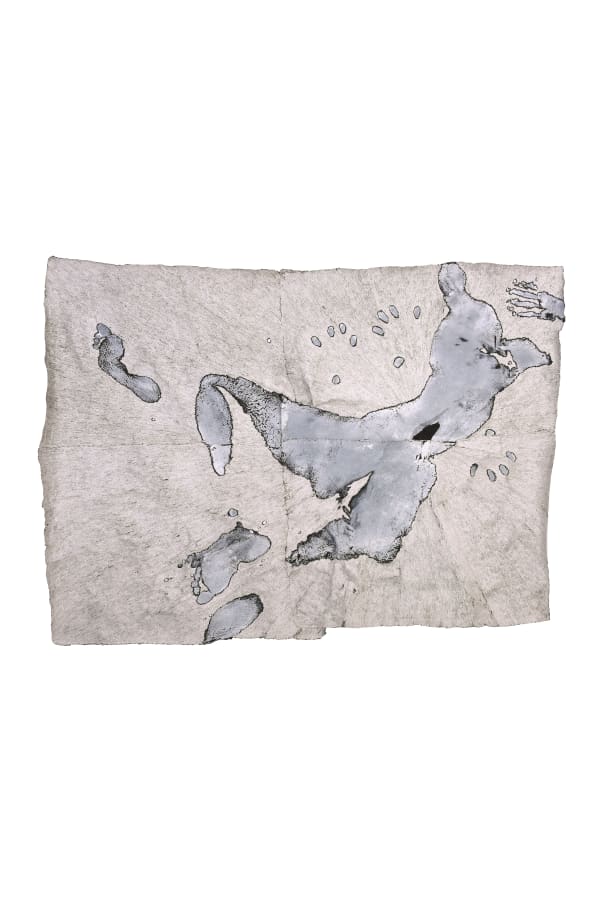Kesewa Aboah
Kesewa Aboah is a multidisciplinary artist whose practice explores the visceral immediacy of touch through intimate and enigmatic mark-making. Her monochromatic works on paper employ her own body as both a painting tool and a printing plate. Coating her skin in ink, she presses herself onto paper, allowing flesh, pigment, and weight to create imagery that reflects disquieting, dysmorphic corporeality. She then meticulously paints around these impressions with a velvety matte black paint that absorbs almost all light.
Her tapestries, crafted from thread woven into paper, extend this exploration through intricate embroidery, where lines radiate from the body like rays of sunlight. This process creates a textured, undulating surface that resembles skin or animal hide, forcing a confrontation with the body's edges and its interaction with the world. Aboah reconfigures the female form, leaving behind a dance-like trace of its presence.
Despite their intimate connection to her body, both her paintings and tapestries remain anonymous, devoid of recognisable features. Her work floats between abstraction and figuration, between body and space, employing the most direct means of mark-making while retaining a profoundly poetic ambiguity.







